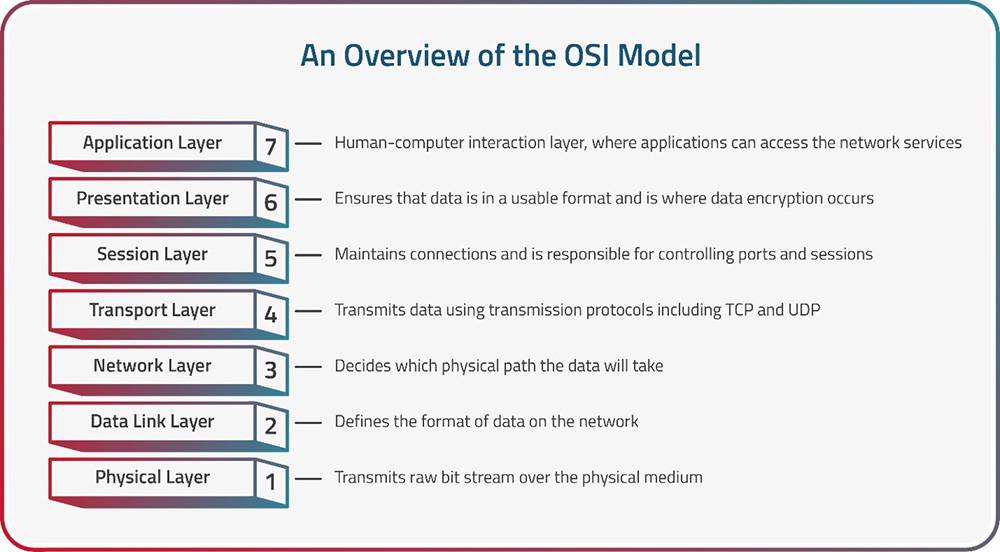About Osi
 piyush kumar
piyush kumar
What is defined OSI?
The open systems interconnection (OSI) model is defined as a standard model used to describe the flow of information from one computing device to another operating in a networking environment. This article explains the OSI model in detail, its seven layers, and its importance in today's networked world.
Physical Layer: This is like the paper and the envelope. It's the actual material used to send the letter.
Data Link Layer: It's like adding the address and making sure the letter doesn't get torn. This layer deals with organizing the data into packets and making sure they're delivered without errors.
Network Layer: This is like figuring out the best route for your letter to reach its destination. It handles addressing and routing your letter through different networks.
Transport Layer: This is like making sure your letter arrives in order and if some parts are missing, asking for them to be sent again. It ensures reliable delivery of data between sender and receiver.
Session Layer: This is like starting and ending the conversation. It manages the communication sessions between computers.
Presentation Layer: This is like translating your letter into a language the recipient can understand, maybe by translating it or encrypting it.
Application Layer: This is like the actual content of your letter. It's the message you're trying to convey, like an email or a webpage.
Each layer handles different aspects of communication, making sure your data gets where it needs to go, in the right format, and without errors.
Key functions:
Synchronizes data bits
Enables modulation (conversion of a signal from one form to another for data transmission)
Defines data transmission rate (bits/sec)
Outlines the arrangement of network devices across different network topologies such as bus, tree, star, or mesh topology
Defines transmission modes such as simple or half-duplex mode
In summary, layer 1 is responsible for transmitting data bits of 0s and 1s between network systems via electrical, mechanical, or procedural interfaces.
Importance of OSI Model
1. Handles networking vulnerabilities & security issues 2. Suitable for cloud-first environments 3. Helps create an inventory of physical assets, security resources, & applications 4. Allows updates to standard OSI models 5. Beneficial for equipment manufacturers
Why is OSI used?
The OSI allows you to identify threats across your entire tech stack. The OSI model has been used for decades to help IT experts understand networking and troubleshoot issues that may arise at any stage in the networking process.
Subscribe to my newsletter
Read articles from piyush kumar directly inside your inbox. Subscribe to the newsletter, and don't miss out.
Written by
